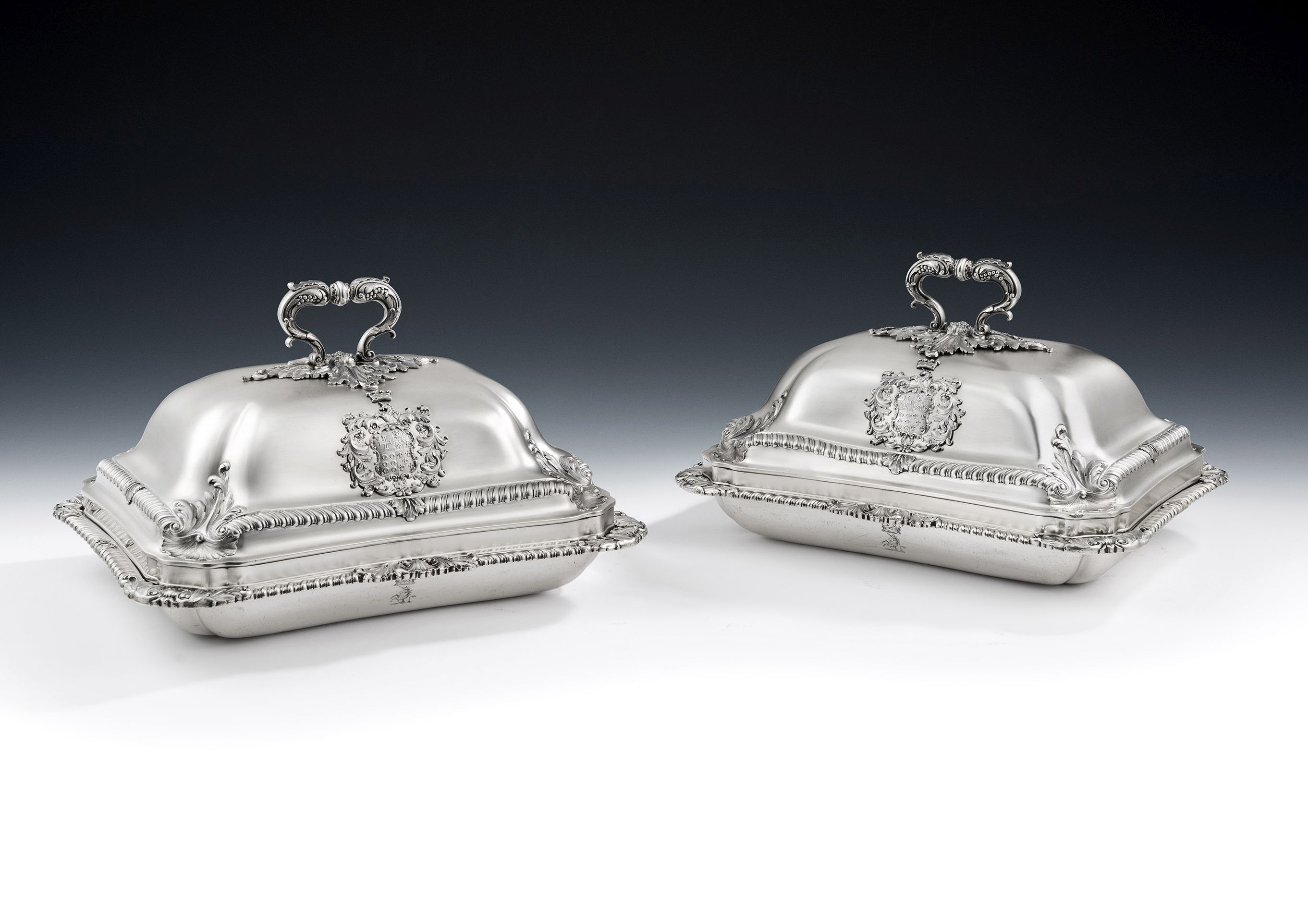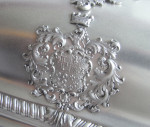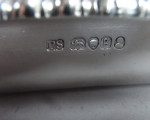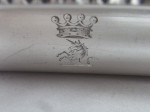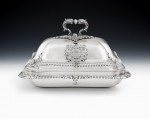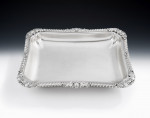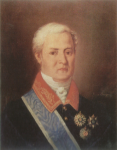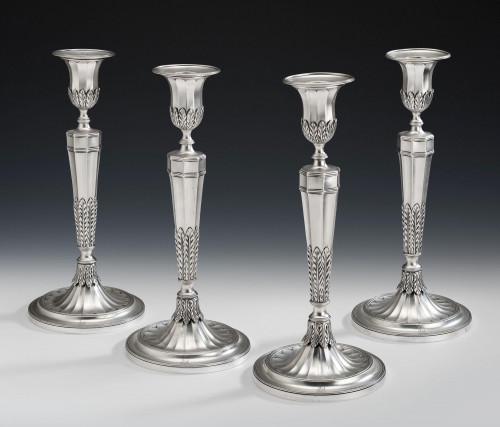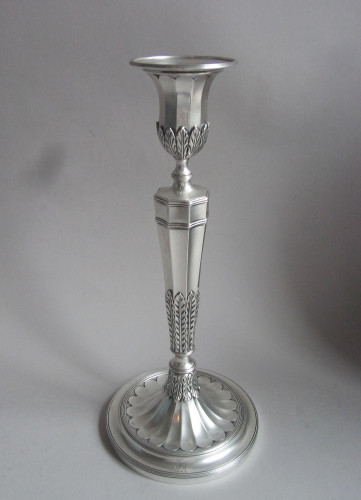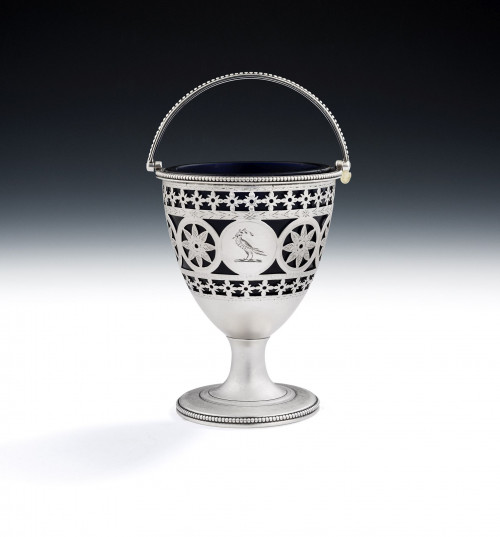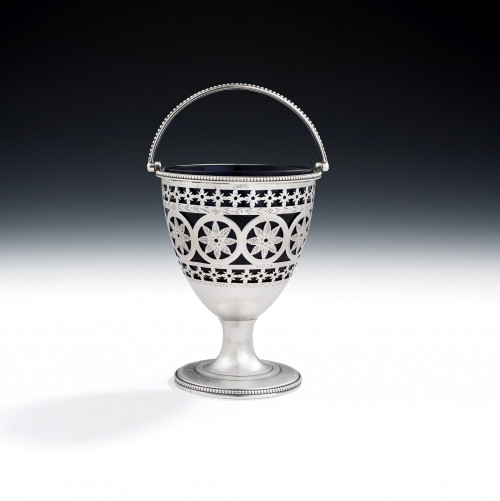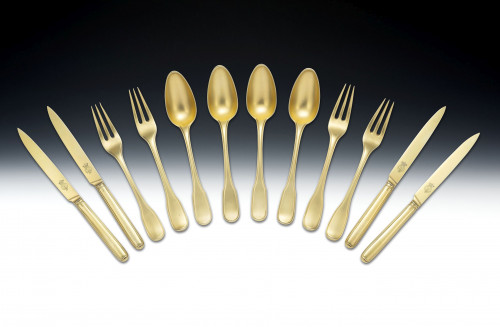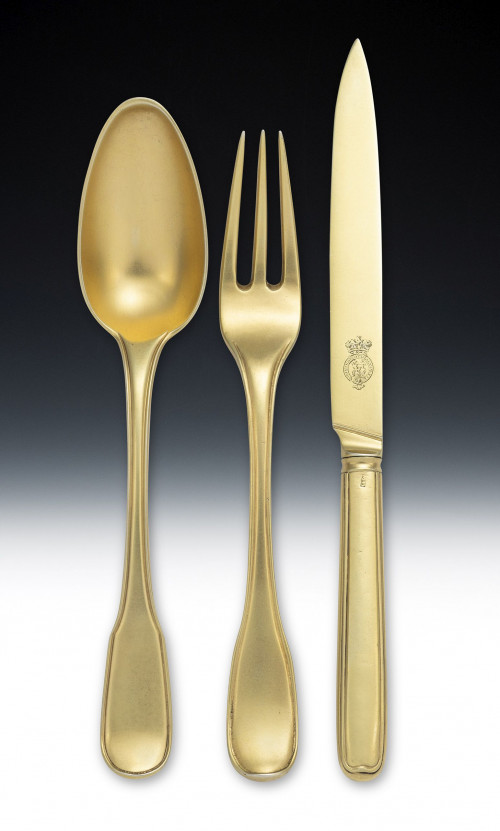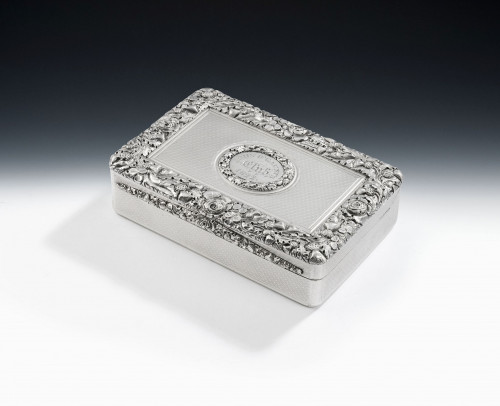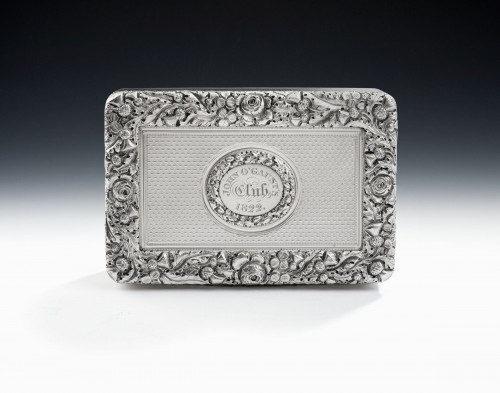- Home
- British Silver 1760-1830
- FROM THE SAMPAIO SERVICE. An important pair of George IV Serving Dishes and Covers made in London in 1822 by Paul Storr.
FROM THE SAMPAIO SERVICE. An important pair of George IV Serving Dishes and Covers made in London in 1822 by Paul Storr.
FROM THE SAMPAIO SERVICE. An important pair of George IV Serving Dishes and Covers made in London in 1822 by Paul Storr.
375511
The dishes are shaped-rectangular in form with a rim decorated with gadroon, shell and acanthus borders. The beautiful high domed covers have incurved corners, decorated with matted foliage and Rococo raying shells. The covers also display a gadrooned band interspersed with acanthus leaf details. The covers rise to leaf-capped scroll handles with fruiting berries and shell details, all on a splayed leafy calyx. Each cover is unusually applied twice with a cast coat of arms, with Crest above, below a baron’s coronet, all surrounded by a pluming foliate scroll and shell cartouche. The bases are also engraved twice with a demi unicorn argent, armed or, maned proper with Baron’s coronet. The dishes are each numbered 2 and 3 and are very well marked on the bases, covers and finials. The quality and condition of these pieces is outstanding.
The arms are those of Teixeira quartering Sampaio, Amaral and Guedes for Henrique Teixeira de Sampaio, Barao de Teixeira, later 1st Conde de Póvoa (1774-1833) A portrait is shown at the end of the image stream. On 22 May 1816 the title 1st Lord de Sampaio was conferred upon him by King João VI in Rio de Janeiro. Soon after, on 6 March 1819, he was made, by Royal Charter, 1st Barao de Teixeira and was granted the right to bear arms. He was created 1st Conde de Póvoa on 3 July 1823, named after his estate in Póvoa de Santo Adrião, near Lisbon.
These dishes are part of the extensive service for 180 persons, ordered by the Conde de Povoa from Paul Storr in 1822-23. This was exactly at the moment that Storr, who left Rundell, Bridge and Rundell in 1819, opened a retail shop in New Bond Street in partnership with John Mortimer. The Sampaio service represents one of the most elaborate and greatest productions of Storr's new shop.
Henrique Teixeira de Sampaio had accumulated his wealth chiefly through the lucrative contracts he made to supply the Anglo-Portuguese forces with food during the Peninsula War (1808-1814). Not only was he able lend money to the Portuguese state but he became financial advisor during the latter part of João VI’s reign, serving as Secretary of State for Finance Affairs between 1823 and 1825. Baron Teixeira was then the wealthiest man in Portugal. He died aged 59 at his home, Rua da Escola Politécnica, in Lisbon, on 27 March 1833 when he was succeeded by his six-year-old son. The latter died in 1837, when his titles became extinct, but his father’s fortune and his extensive service of English silver passed to his sister Marie Louise de Noronha Sampaio. The service descended in the family until the late 20th century at Casa Palmela, Lisbon, the family home of the Dukes of Palmela.
Length: 11.5 inches, 28.75 cm.
Width: 9.5 inches, 23.75 cm.
Height: 7.75 inches, 19.38 cm.
Weight: An outstanding 161oz, the pair
Thank you for your enquiry.
We will get back to you soon.
Please create wishlist to add this item to
RELATED ITEMS

